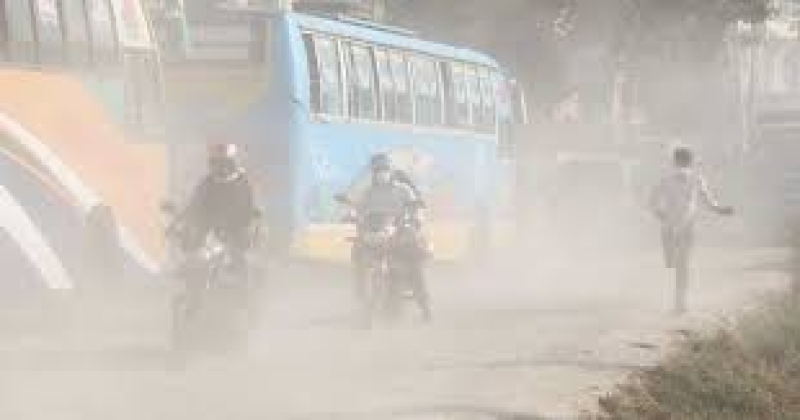- Remittance surges to $2.68 billion in 29 days of November |
- Probe body says Hasina had 'green signal' for BDR Carnage |
- BDR mutiny was conspiracy to destabilise BD: Inquiry chief |
- Teesta Bundh ‘renovation’ in Rangpur turns into a 'sand bonanza' |
- সমুদ্র থেকে লাইটার জাহাজে লাফিয়ে উঠলো ৩ মণ ইলিশ |
No better, Dhaka’s air quality, still ‘unhealthy’ on Tuesday

Air quality of Dhaka recorded unhealthy on Tuesday morning.
Dhaka, Oct 28 -Dhaka's air quality continued to be in the 'unhealthy' zone on Tuesday morning.
With an air quality index (AQI) score of 191 at 9:04 am, Dhaka ranked 3rd in the list of cities around the world with the worst air quality.
Pakistan’s Lahore and India’s Delhi occupied the first and second spots, with AQI scores of 421 and 269, respectively.
When the AQI value for particle pollution is between 50 and 100, air quality is considered ‘moderate’, usually sensitive individuals should consider limiting prolonged outdoor exertion, between 101 and 150, air quality is considered ‘unhealthy for sensitive groups’, between 150 and 200 is ‘unhealthy’, between 201 and 300 is said to be 'very unhealthy', while a reading of 301+ is considered 'hazardous', posing serious health risks to residents.
The AQI, an index for reporting daily air quality, informs people how clean or polluted the air of a certain city is and what associated health effects might be a concern for them.
The AQI in Bangladesh is based on five pollutants: particulate matter (PM10 and PM2.5), NO2, CO, SO2, and ozone.
Dhaka has long been grappling with air pollution issues. Its air quality usually turns unhealthy in winter and improves during the monsoon.
As per World Health Organization (WHO), air pollution kills an estimated seven million people worldwide every year, mainly due to increased mortality from stroke, heart disease, chronic obstructive pulmonary disease, lung cancer, and acute respiratory infections. - UNB

